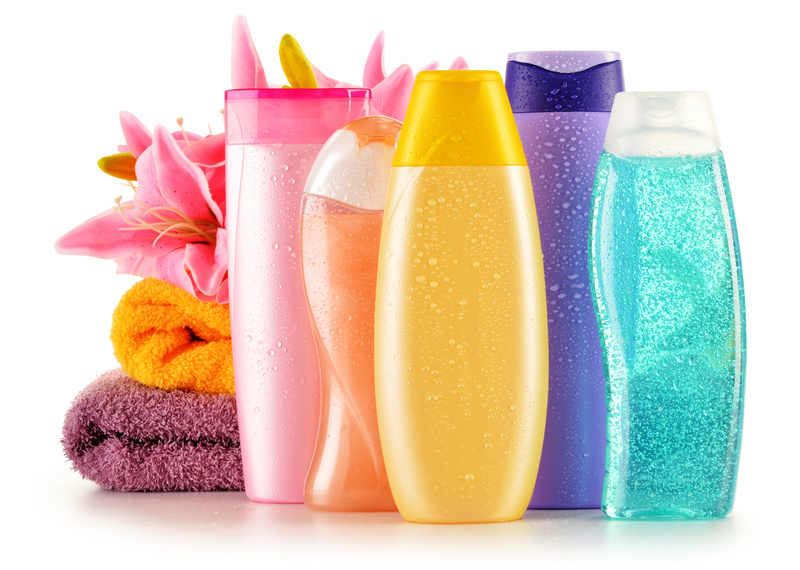Practical Advice for a Mold-Free Bathroom Zone
Are you tired of constantly battling mold in your bathroom? Maintaining a mold-free bathroom zone is more than just a matter of convenience--it's essential for your health and for preserving your property value. Mold infestations can cause unpleasant odors, expensive damage, and even trigger health issues such as allergies and respiratory problems. This comprehensive guide provides practical advice for keeping your bathroom mold-free, exploring everything from preventative measures to long-term strategies.
Why Mold Thrives in Bathrooms
Bathrooms are notorious for mold growth. The reasons are straightforward:
- Constant moisture from showers, baths, and sinks
- Poor ventilation
- Lack of sunlight
- Organic matter (such as soap scum and body oils)

Identifying Mold in Your Bathroom
Knowing what mold looks like could help you spot and eliminate mold early. Bathroom mold often appears as:
- Black or green spots along grout lines and caulking
- Discoloration on ceilings, walls, or painted surfaces
- Musty or earthy odors
- Mildew on shower curtains and bath mats
Best Practices for a Mold-Free Bathroom
Achieving a mold-free bathroom is not a one-time effort. It requires an ongoing commitment to cleanliness, proper ventilation, and maintenance. Let's explore the most important steps you can take:
1. Improve Bathroom Ventilation
- Install an Exhaust Fan: Choose a high-capacity exhaust fan, ideally connected to a timer or humidity sensor. Let it run for at least 20 minutes after showers.
- Open Windows: If your bathroom has windows, open them during and after showering to let humid air out and bring in fresh air.
- Leave the Door Open: Encourages circulation and quick drying of wet surfaces.
Proper airflow is a cornerstone of the mold-free bathroom zone.
2. Keep Bathroom Surfaces Dry
- Wipe Down Tiles and Surfaces: After every shower or bath, use a squeegee or microfiber cloth to remove excess water from tiles, glass doors, and other flat surfaces.
- Spread Out Shower Curtains: Fully extend plastic or fabric curtains so moisture can't collect in folds.
- Hang Towels and Bath Mats: Place these on rods or racks so they dry quickly--never leave them in a damp pile!
Reducing surface moisture cuts mold risk dramatically.
3. Choose Mold-Resistant Materials
- Opt for Mold-Resistant Paint: Use special anti-mold or mildew-resistant paint on walls and ceilings. This creates a hostile environment for spores.
- Select Appropriate Caulking and Grout: Silicone-based and antimicrobial caulks/grouts are less susceptible to mold growth than regular types.
- Use Waterproof Flooring: Tile, vinyl, or stone are better options than porous materials like carpet or untreated wood.
Building your bathroom with these materials gives you a head start toward a long-lasting, mold-free zone.
4. Regular Cleaning Routines
Consistency is your ally in the fight against mold.
- Scrub Problem Areas Weekly: Focus on grout, caulk, and corners where mold is likely to appear.
- Use Mold-Fighting Cleaners: Bleach, hydrogen peroxide, vinegar, or specialized mold removers are powerful tools.
- Wash Towels and Mats Frequently: Launder towels, rugs, and washcloths at least once a week, using hot water to kill any spores.
- Disinfect Trash Bins: Rinse and disinfect bathroom trash cans regularly, especially if they hold any damp materials.
5. Repair Leaks Immediately
Hidden leaks are one of the main culprits of mold in bathrooms. Regularly inspect:
- Under sinks
- Around the toilet base
- Bathtub and shower edges
- Ceilings (if located beneath another bathroom)
Common Bathroom Mold Hotspots--and How to Combat Them
1. Grout and Caulk Lines
Grout between tiles and along tub or shower edges is especially vulnerable. Keep these areas safe by:
- Scrubbing with a baking soda paste or a dedicated grout cleaner
- Applying a grout sealer every 6-12 months
- Replacing old, cracked, or mold-infested caulk promptly
2. Shower Curtains & Liners
Wash fabric shower curtains and plastic liners in hot water with some vinegar every month. Consider mold-resistant alternatives and always close them to dry after use.
3. Ceilings & Bathroom Fans
Ceilings near the shower and exhaust fan housings often accumulate condensation. Prevent issues by:
- Wiping down regularly
- Cleaning dust from restroom fans and vents
- Checking that all fans vent outside, not just into the attic
4. Storage and Clutter
Keep countertops, shower caddies, and under-sink storage organized. Trapped moisture under containers or behind clutter can feed mold colonies.
Natural Solutions for a Mold-Free Bathroom Environment
If you prefer to avoid harsh chemicals, there are several eco-friendly ways to maintain a mold-free bathroom zone:
- White Vinegar: Disinfects and kills most types of mold. Spray and leave on affected areas for 30 minutes before wiping clean.
- Baking Soda: A gentle abrasive that cleans tiles and grout.
- Tea Tree Oil: Mix a teaspoon with two cups of water for a powerful natural anti-mold spray.
- Hydrogen Peroxide: Use a 3% solution as a spray for moldy areas, allowing it to fizz away and break down spores.
Long-Term Strategies for a Mold-Resistant Bathroom
Beyond daily habits, consider these long-term solutions for maintaining a bathroom that's truly free from mold problems:
- Upgrade Ventilation Systems: Invest in an energy-efficient, humidity-sensing fan suited to your bathroom's size.
- Install a Dehumidifier: In extremely humid climates, a small plug-in dehumidifier can work wonders in keeping the air dry.
- Seal Tiled Walls and Floors: Apply a water-repellent sealer to create a protective barrier against moisture infiltration.
- Remodel with Mold-Resistant Materials: When renovating, select products labeled as mold- or mildew-resistant for walls, flooring, and cabinetry.
- Routinely Inspect Bathroom Hardware: Every few months, check behind toilets, below vanities, and around tubs for signs of leaks or dampness.

Frequently Asked Questions About Mold-Free Bathrooms
Is Bathroom Mold Dangerous?
Some molds--especially black mold (Stachybotrys chartarum)--can produce mycotoxins that are harmful to sensitive individuals. Even ordinary bathroom mildew can cause throat irritation, allergy symptoms, or worsen asthma. Keeping a mold-free bathroom zone is crucial for vulnerable family members.
How Often Should I Deep Clean My Bathroom to Prevent Mold?
While daily habits reduce risk, deep cleaning every 1-2 weeks is the best way to keep all surfaces mold-free. This includes scrubbing grout, replacing or washing linens, and checking hidden areas for moisture.
Can Houseplants Prevent or Encourage Bathroom Mold?
Some houseplants absorb humidity and improve air quality, but overwatering can increase mold risk. Keep plants trimmed and avoid water pooling in saucers.
Are Commercial Mold Cleaners Better Than DIY Solutions?
Both can be effective. Commercial products may work faster or cover larger areas, while DIY natural remedies are gentler for families and pets. Consistency and proper technique are more important than the specific product used.
What If Mold Keeps Coming Back?
Persistent mold problems indicate an underlying moisture issue--usually a hidden leak, inadequate ventilation, or improper building materials. Address the root cause to achieve a lasting mold-free zone.
Conclusion: Enjoy a Healthier, Mold-Free Bathroom Zone
Maintaining a mold-free bathroom environment is achievable with the right knowledge, tools, and habits. By following the practical advice outlined above--ventilating, cleaning, choosing the right materials, and staying vigilant about repairs--you can create a space that looks and smells fresh, protects your health, and preserves the value of your home.
Start today by integrating these strategies into your routine and reclaim your bathroom as a truly clean and comfortable zone free of mold!


